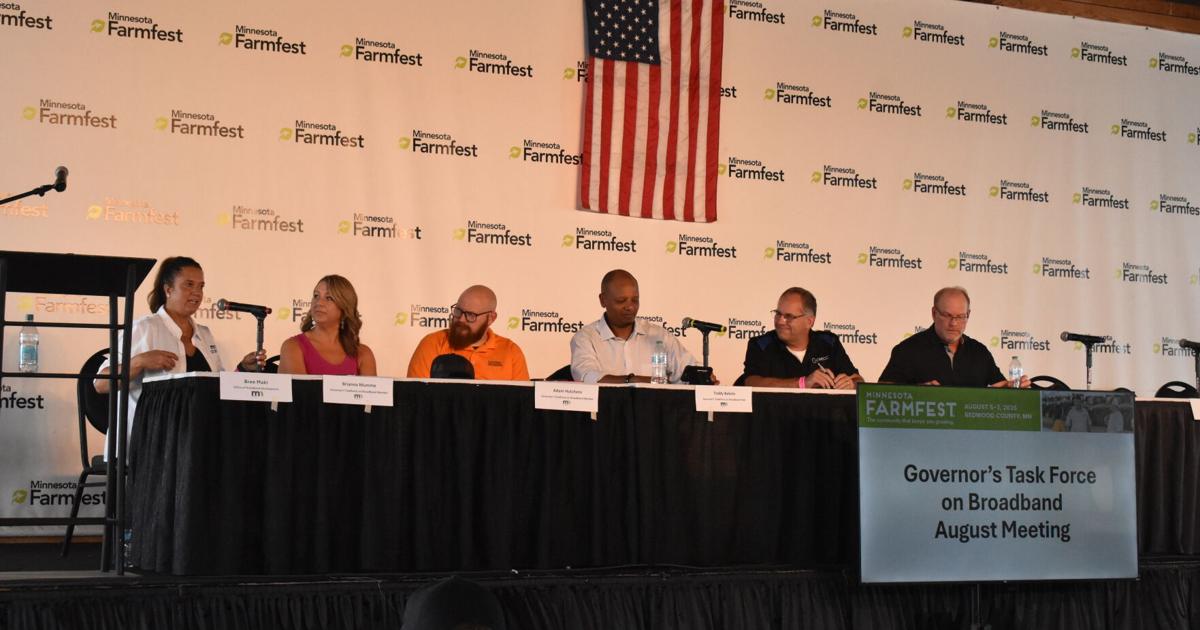The Governor’s Task Force on Broadband took its conversation into the heart of rural Minnesota, holding its August meeting at Farmfest.
Around the table were state officials, representatives internet provider companies, and community advocates – people who know firsthand the challenges of connecting farms, small towns and rural businesses to reliable, high-speed internet.
The meeting brought together voices including task force chairperson Teddy Bekele, task force members like Adam Hutchens and Briana Mumme, and Minnesota Office of Broadband Development Director Bree Maki, alongside industry partners and local leaders. Their message was: broadband is no longer optional for rural communities, it’s a necessity.
Minnesota’s statutory target calls for all homes and businesses to have access to speeds of at least 100 megabits per second (Mbps) for downloads and 20 Mbps upload by 2026. Maki told the group that recent state and federal funding has accelerated progress, but some households remain out of reach.
“The last miles are the hardest,” she said.
Geography and sparse populations complicate the process.
Grant programs, including the Border-to-Border Broadband Grant Program, have helped providers extend service into areas where it otherwise wouldn’t pencil out.
People are also reading…
From an agricultural finance perspective, Paul Kohls of Compeer Financial sees broadband as foundational to farm business planning.
“Whether it’s accessing real-time markets, running precision ag equipment, or keeping up with compliance requirements, farms today run on data,” Kohls said. “And if the connection’s not there, you’re at a disadvantage before you even start.”
Panelists echoed that point, emphasizing that broadband isn’t just about streaming video, it’s about enabling farmers to run equipment, monitor livestock, and communicate with buyers without leaving the farm.
Maki said rural communities need to be part of the planning process, and the board continues to update maps of service areas. Funding decisions are based on mapping of underserved areas.
While the focus was internet access, panelists reminded attendees that broadband is part of a larger rural infrastructure puzzle. Reliable roads, energy and water systems are also necessary for keeping communities viable. Still, broadband consistently rose to the top of priorities.
For Kohls, the conversation ties directly into the future of rural economies.
“When you think about attracting young families or new businesses, internet access is right up there with good schools and healthcare,” he said. “It’s one of those base-level services you have to have.”
The task force will continue gathering public input this fall before making recommendations to the governor at the end of the year. For many at Farmfest, the meeting was a reminder that infrastructure investment isn’t just about convenience, it’s about keeping rural Minnesota connected and competitive in a digital economy.
Born and raised on a farm in southeastern South Dakota, Katelyn currently resides in Sioux Falls. She enjoys attending SDSU football games (her alma mater), going to farmer’s markets and visiting her parents at their family farm. Reach her at kwinberg@tristateneighbor.com.
Be the first to know
Get local news delivered to your inbox!
